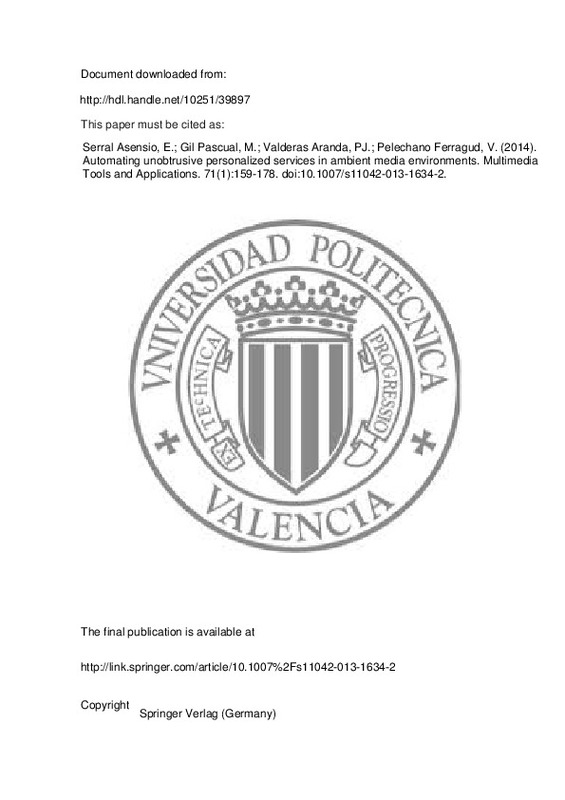Bencomo N, Grace P, Flores-Cortés CA, Hughes D, Blair GS (2008) Genie: supporting the model driven development of reflective, component-based adaptive systems. In: ICSE, pp 811–814
Blumendorf M, Lehmann G, Albayrak S (2010) Bridging models and systems at runtime to build adaptive user interfaces. In: Proc. of EICS 2010. ACM, pp 9–18
Brown DM (2010) Communicating design: developing web site documentation for design and planning, 2nd edn. New Riders Press
[+]
Bencomo N, Grace P, Flores-Cortés CA, Hughes D, Blair GS (2008) Genie: supporting the model driven development of reflective, component-based adaptive systems. In: ICSE, pp 811–814
Blumendorf M, Lehmann G, Albayrak S (2010) Bridging models and systems at runtime to build adaptive user interfaces. In: Proc. of EICS 2010. ACM, pp 9–18
Brown DM (2010) Communicating design: developing web site documentation for design and planning, 2nd edn. New Riders Press
Calinescu R (2011) When the requirements for adaptation and high integrity meet. In: Proceedings of the 8th workshop on assurances for self-adaptive systems, ASAS ’11. ACM, New York, pp 1–4
Filieri A, Ghezzi C, Tamburrelli G (2011) Run-time efficient probabilistic model checking. In: Proceedings of the 33rd International Conference on Software Engineering, ICSE ’11. ACM, New York, pp 341–350
Gershenfeld N, Krikorian R, Cohen D (2004) The internet of things. Sci Am 291(4):46–51
Gibbs WW (2005) Considerate computing. Sci Am 292(1):54–61
Gulliksen J, Goransson B, Boivie I, Blomkvist S, Persson J, Cajander A (2003) Key principles for user-centred systems design. Behav Inform Technol 22:397–409
Hinckley K, Horvitz E (2001) Toward more sensitive mobile phones. In: Proc. of the UIST ’01, pp 191–192
Ho J, Intille SS (2005) Using context-aware computing to reduce the perceived burden of interruptions from mobile devices. In: Proc. of CHI ’05. ACM, pp 909–918
Horvitz E, Kadie C, Paek T, Hovel D (2003) Models of attention in computing and communication: from principles to applications. Commun ACM 46:52–59
Ju W, Leifer L (2008) The design of implicit interactions: making interactive systems less obnoxious. Des Issues 24(3):72–84
Kortuem G, Kawsar F, Fitton D, Sundramoorthy V (2010) Smart objects as building blocks for the internet of things. IEEE Internet Comput 14(1):44–51
Lewis JR (1995) Ibm computer usability satisfaction questionnaires: psychometric evaluation and instructions for use. Int J Hum Comput Interact 7(1):57–78
Lugmayr A, Risse T, Stockleben B, Laurila K, Kaario J (2009) Semantic ambient media—an introduction. Multimed Tools Appl 43(3):337–359
Mattern F (2003) From smart devices to smart everyday objects. In: Proc. Smart Objects Conf. (SOC 03). Springer, pp 15–16
Morin B, Barais O, Jezequel JM, Fleurey F, Solberg A (2009) Models run.time to support dynamic adaptation. Comput 42(10):44–51
Nelson L, Churchill EF (2005) User experience of physical-digital object systems: implications for representation and infrastructure. Paper presented at smart object systems workshop, in cojunction with ubicomp 2005
Paternò F (2002) Concurtasktrees: an engineered approach to model-based design of interactive systems. In: L.E. Associates (ed) The handbook of analysis for human-computer interaction, pp 483–500
Paternò F (2003) From model-based to natural development. HCI International, pp 592–596
Ramchurn SD, Deitch B, Thompson MK, Roure DCD, Jennings NR, Luck M (2004) Minimising intrusiveness in pervasive computing environments using multi-agent negotiation. MobiQuitous ’04, pp 364–372
Runeson P, Höst M (2009) Guidelines for conducting and reporting case study research in software engineering. Empir Softw Eng 14(2):131–164
Schmidt A (2000) Implicit human computer interaction through context. Pers Technol 4(2–3):191–199
Serral E, Valderas P, Pelechano V (2010) Supporting runtime system evolution to adapt to user behaviour. In: Proc. of CAiSE’10, pp 378–392
Serral E, Valderas P, Pelechano V (2010) Towards the model driven development of context-aware pervasive systems. PMC 6(2):254–280
Siegemund F (2004) A context-aware communication platform for smart objects. In: Proc of the int conf on pervasive computing. Springer, pp 69–86
Streitz NA, Rocker C, Prante T, Alphen Dv, Stenzel R, Magerkurth C (2005) Designing smart artifacts for smart environments. Comput 38(3):41–49. doi: 10.1109/MC.2005.92
Thiesse F, Kohler M (2008) An analysis of usage-based pricing policies for smart products. Electron Mark 18(3):232–241. doi: 10.1080/10196780802265751
Vastenburg MH, Keyson DV, de Ridder H (2008) Considerate home notification systems: a field study of acceptability of notifications in the home. Pers Ubiquit Comput 12(8):555–566
[-]







![[Cerrado]](/themes/UPV/images/candado.png)


